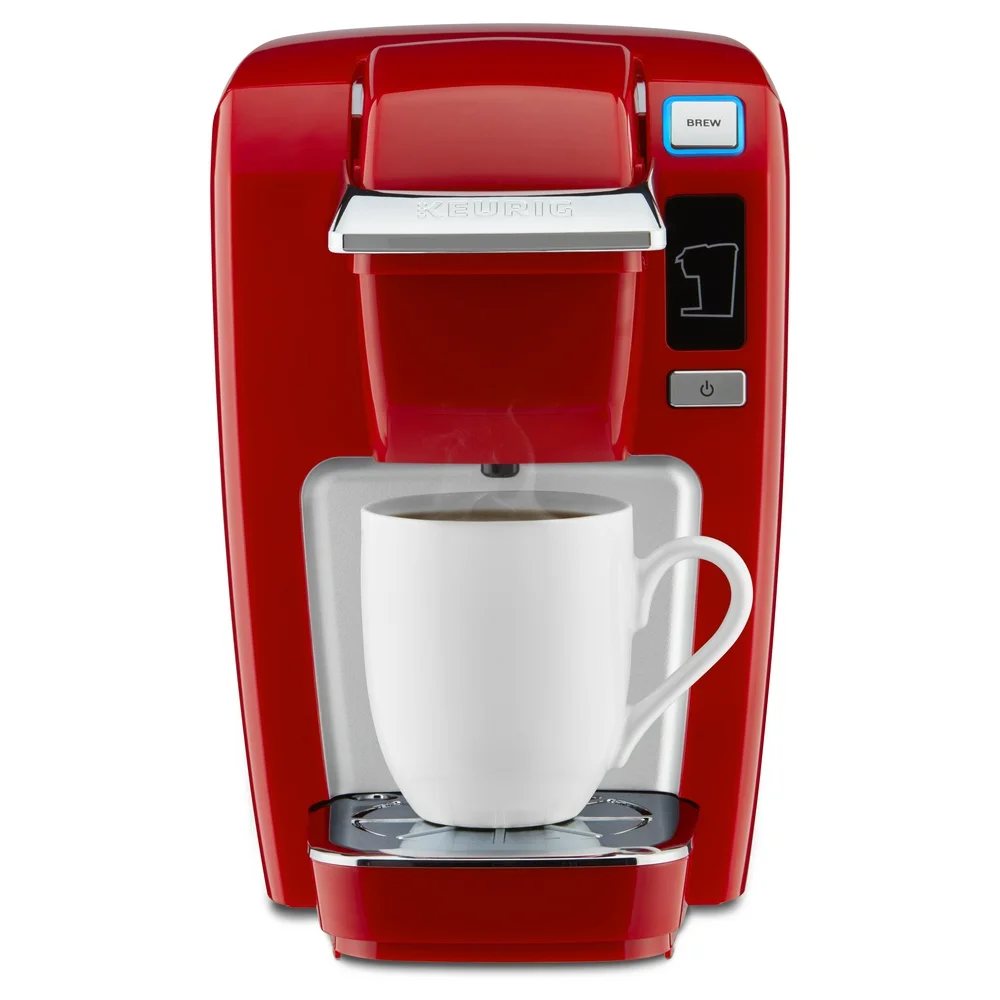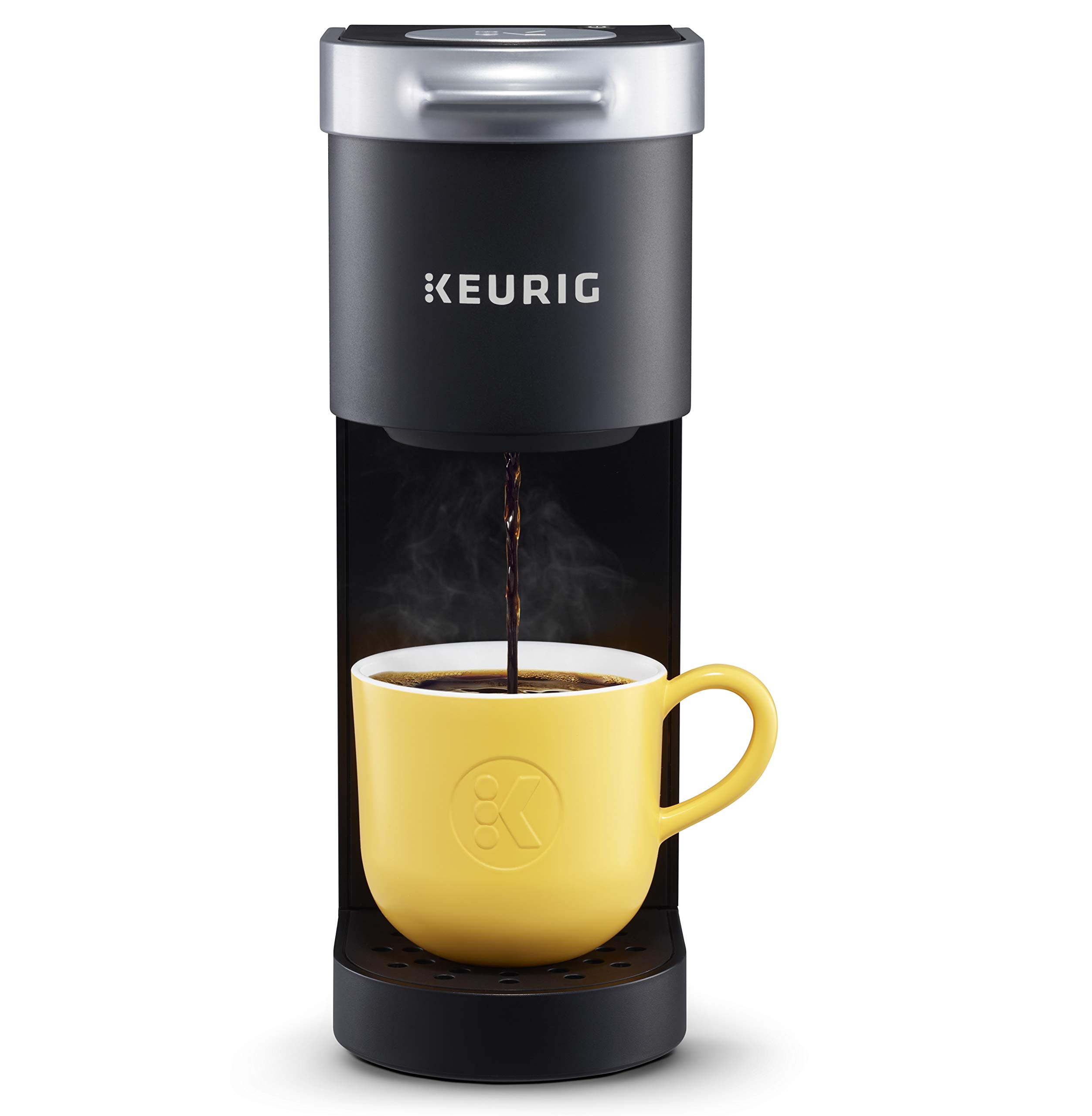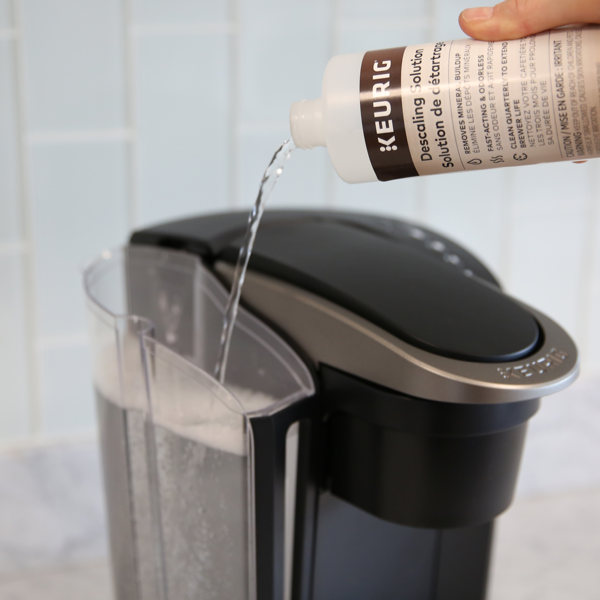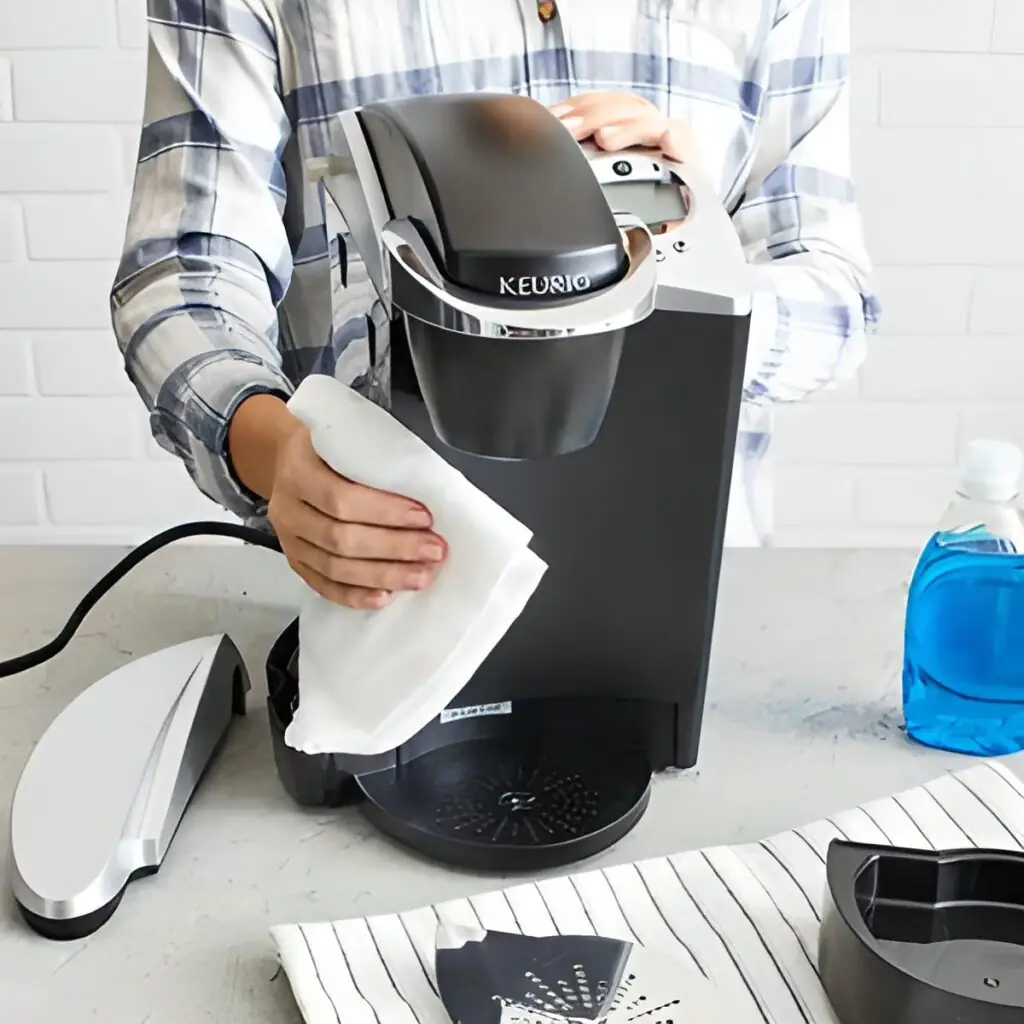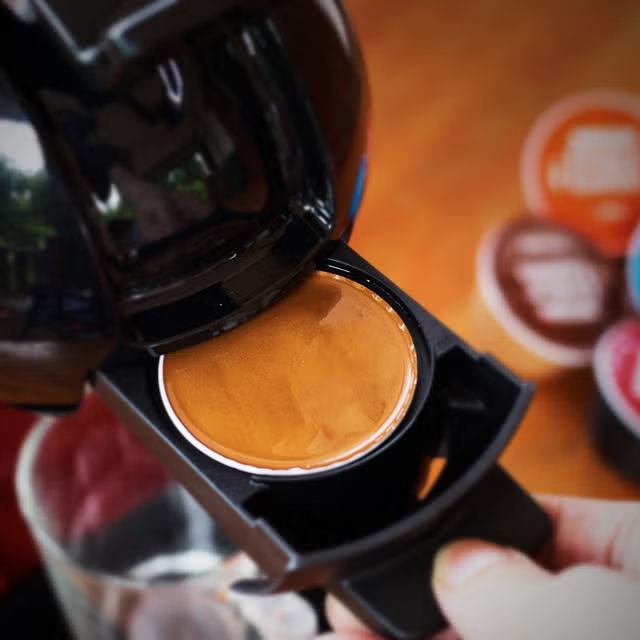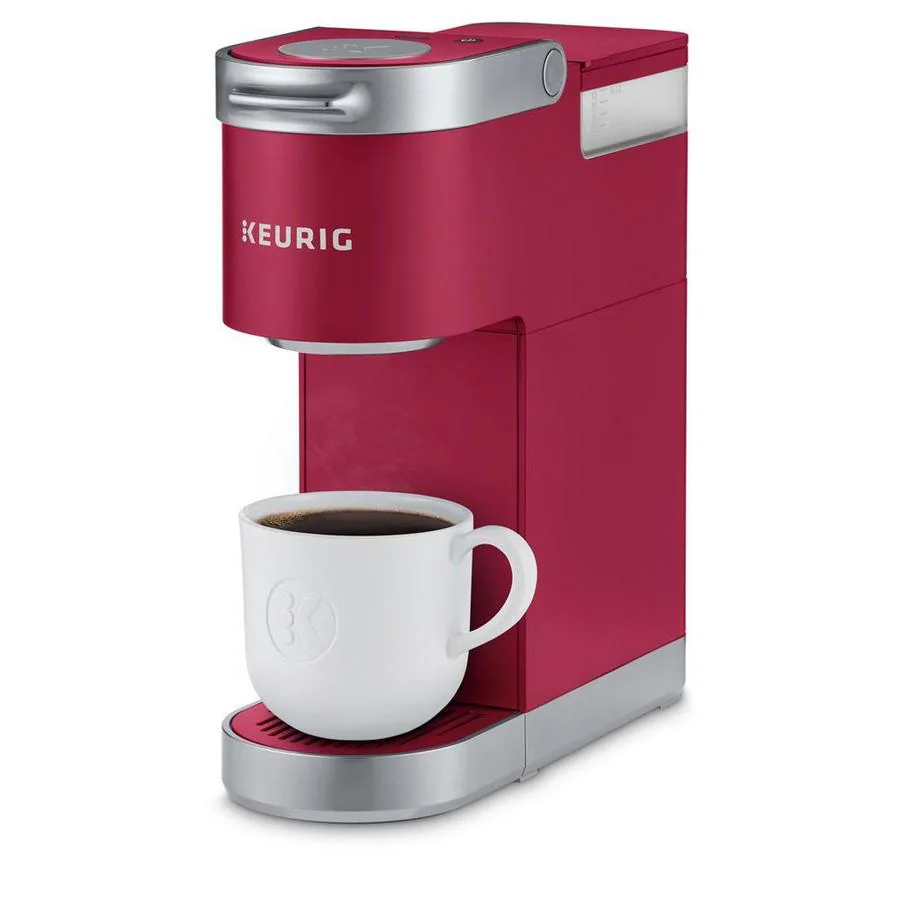
The Keurig Mini is an incredibly convenient appliance for coffee lovers everywhere. Its compact size and ease of use make it a popular choice for individuals who want a quick cup of coffee without the fuss. However, like any appliance, it requires regular cleaning to ensure it continues to function correctly and produce great-tasting coffee. In this detailed guide, we’ll walk you through how to clean Keurig Mini from top to bottom.
Understanding how to clean keurig mini is the first step to maintaining your machine. Over time, coffee residues, oils, and mineral deposits can build up within your Keurig Mini, potentially impacting its performance and the quality of your brew. By following this guide, not only will you extend the life of your coffee maker, but you’ll also ensure every cup of coffee is as delicious as the first.
Disassembling the Keurig Mini
Unplugging and Cooling Down
Before beginning any cleaning process, the first step is to safely disassemble your machine. Start by unplugging the Keurig Mini and allowing it to cool down if it has been recently used. Safety should always be your priority, and giving the machine time to cool will prevent accidental burns or electric shocks.
Removing the Water Reservoir
For those who have a Keurig Mini model with a removable water reservoir, start by emptying any remaining water and setting the reservoir aside. Make sure to wash it with warm, soapy water. After washing, rinse it thoroughly to ensure no soap residue remains, then let it air dry.
Detaching the Drip Tray and Pod Holder
Next, remove the drip tray and pod holder. These components are often hotspots for grime and coffee residue. Detach these parts and wash them similarly with warm, soapy water. Use a brush to get into any small or tight spaces where coffee grounds or debris might accumulate. Once cleaned, rinse thoroughly and set them aside to dry.
Inspecting the Machine
With the exterior components removed, inspect your Keurig Mini for any visible signs of build-up, mold, or coffee stains. Pay particular attention to the area around the pod holder, as coffee grounds often gather there. A quick visual inspection will guide you on which areas need the most attention during the cleaning process.
Cleaning External Components
Wiping Down the Machine
Start by using a soft, damp cloth to wipe down the exterior of the Keurig Mini. Be gentle to avoid scratching the surface. Cleaning the exterior not only improves the appearance of your machine but also removes any coffee splashes or dust that might accumulate over time.
Using Mild Detergents
For tougher stains or grimes, use a mild detergent diluted in warm water. Avoid harsh chemicals or abrasive sponges, as these can damage the machine’s surface. Apply the detergent mix to your cloth and gently scrub the affected areas. Afterward, use a damp cloth to wipe away any soap residue.
Cleaning the Drip Tray and Pod Holder
Given that the drip tray and pod holder come into contact with coffee daily, it’s essential to clean them thoroughly. Use a mild detergent to clean these parts and a brush to ensure all crevices are free from coffee grounds. After cleaning, rinse thoroughly with warm water and let them air dry.
Cleaning Internal Components
Flushing the Machine
One of the most critical parts of cleaning your Keurig Mini is descaling the internal components. Descaling removes mineral deposits that accumulate inside the machine, which can affect its performance and the taste of your coffee.
Using Vinegar Solution
A natural and effective way to descale your Keurig Mini is to use a vinegar solution. Fill the water reservoir with a mixture of half white vinegar and half water. Place a mug on the drip tray and run a brew cycle without a K-cup. Repeat the process until the water reservoir is empty. This action helps remove any internal build-up.
Running Fresh Water Cycles
Following the vinegar solution flush, it’s crucial to run several cycles with only fresh water. This step ensures that any vinegar residue is removed from the machine. Continue running cycles until you can no longer detect the vinegar smell or taste, typically around two to three full reservoirs of fresh water.
Cleaning the Needles
Locating the Needles
The needles in your Keurig Mini are responsible for puncturing K-cups and allowing water to flow through the coffee grounds. Over time, these needles can become clogged with coffee residues. Cleaning them ensures a consistent water flow for optimal brewing.
Using a Needle Cleaning Tool
Most Keurig Mini models come with a needle cleaning tool. If you don’t have this tool, you can use a paper clip. Carefully insert the tool or paper clip into the needle holes to remove any clogs. Be cautious to avoid bending or damaging the needles in the process.
Rinsing the Needles
After dislodging any blockages, run a couple of brew cycles with just water to flush out any remaining debris. This step ensures that the needles are thoroughly cleaned and free of any coffee residues.
Maintenance Tips for Longevity
Regular Cleaning Schedule
To keep your Keurig Mini in optimal condition, establish a regular cleaning schedule. At a minimum, clean the external parts weekly and descale the internal components every three to six months, depending on your water hardness and usage frequency.
Using Filtered Water
Using filtered water can significantly reduce the build-up of mineral deposits within your Keurig Mini. Filtered water is less likely to contain the minerals that contribute to scale formation, thereby prolonging the intervals between descaling sessions.
Avoiding Overuse
While it may be tempting to use your Keurig Mini continuously, giving it a break between brew cycles can help prevent overheating and wear and tear on the internal components. This practice can extend the life of your coffee maker and ensure consistently good performance.
Troubleshooting Common Issues
Machine Not Brewing
If your Keurig Mini isn’t brewing correctly even after cleaning, it could be due to several reasons, such as clogged needles, insufficient water in the reservoir, or even a malfunctioning part. Double-check these aspects and ensure everything is clean and functioning as it should be.
Odd Tastes or Smells
Should you notice odd tastes or smells in your coffee, it’s a sign that your machine needs cleaning. Besides regular maintenance, make sure to avoid leaving water in the reservoir for extended periods, as standing water can create unpleasant odors.
Slow Brewing
A slow brewing process often indicates that it’s time for descaling. Mineral build-up can restrict water flow, leading to slower brew times. Performing a thorough descaling procedure typically resolves this issue.
Leaking Water
If your Keurig Mini starts leaking water, it could be due to an improperly seated water reservoir or a clogged needle. Ensure that all components are correctly placed and free from blockages. If the issue persists, consult your user manual for further troubleshooting steps.
 Prolonging the Life of Your Keurig Mini
Prolonging the Life of Your Keurig Mini
Consistent Cleaning
Weekly cleaning of removable parts and a monthly vinegar descaling process are essential practices to ensure your machine operates smoothly. Consistent maintenance can prevent the build-up of harmful residues and extend the overall lifespan of your Keurig Mini.
Quality of Water and Pods
The quality of water and coffee pods used in your Keurig Mini can also impact its performance. Opt for high-quality, filtered water and premium coffee pods to reduce the risk of contaminants entering the machine. Using better quality inputs can make a noticeable difference in the longevity and performance of your coffee maker.
Storage and Care
If you plan to store your Keurig Mini for an extended period, ensure it is completely clean and dry. Store it in a cool, dry place to avoid any moisture-related damage. Before using it again, perform a quick rinse cycle to make sure it is ready for brewing.
Conclusion: how to clean keurig mini
Understanding how to clean Keurig Mini comprehensively will ensure that you enjoy consistently good coffee every day. Regularly maintaining and cleaning all the components, from the water reservoir to the needles, will prevent any unforeseen issues and contribute to the longevity of your machine.
By following the steps outlined in this guide, you can keep your Keurig Mini in top condition and enjoy a perfect brew each time. After all, a well-maintained coffee maker not only extends the life of your beloved appliance but also enhances your daily coffee experience.
